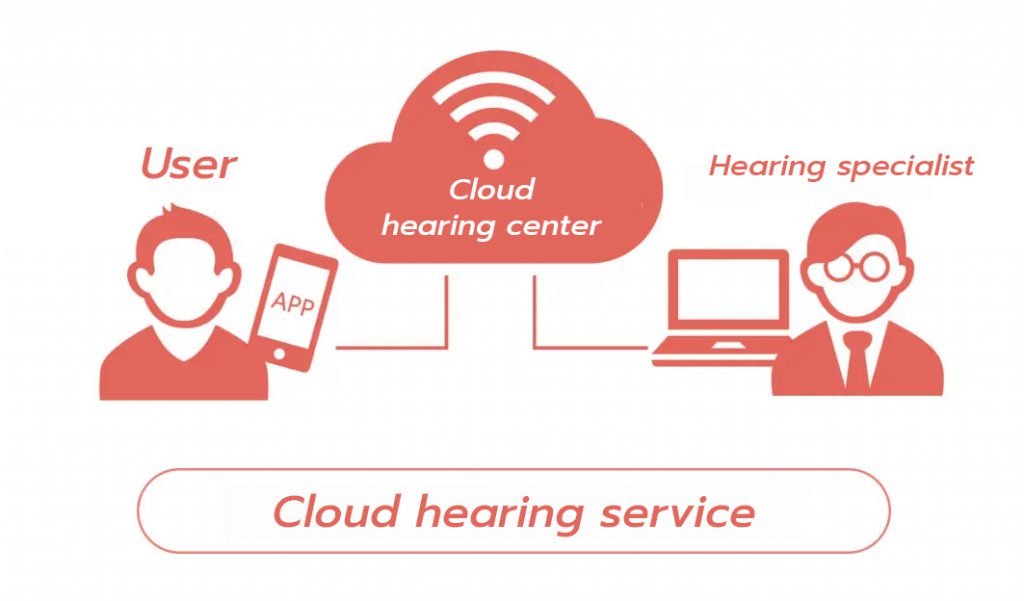
In-ear hearing aids are designed with a compact structure to provide a comfortable fit and a discreet appearance within the ear canal. Key components include a miniature microphone to capture ambient sounds, a signal processor to amplify sounds appropriately, a small speaker to deliver sound into the ear canal, and a compact battery designed for extended lifespan. The devices are often crafted with a simple and streamlined design to blend seamlessly with the natural shape of the ear, ensuring comfort and a natural appearance during use.

In-ear hearing aids are designed with a compact structure to provide a comfortable fit and a discreet appearance within the ear canal. Key components include a miniature microphone to capture surrounding sounds, a signal processor to amplify sounds as needed, a small speaker that delivers the sound into the ear canal, and a compact battery designed for extended life. Additionally, the device is often designed with a simple and streamlined appearance that blends seamlessly with the shape of the ear, ensuring comfort and a natural look during use.
Hearing aids are small electronic devices designed to amplify sound for individuals with hearing difficulties or hearing loss, enhancing their ability to hear and communicate. The components include:
These components work together by capturing external sounds, modifying them based on preset modes, and finally playing the processed sound at a higher volume directly into the eardrum. This enables individuals with hearing loss to hear sounds clearly again.
The Cloud in-ear hearing aid features a modern design and compact size, equipped with an external noise-canceling system. It can connect to various devices, allowing you to enjoy entertainment without limits. Settings can be adjusted through the myHearing app, making it suitable for individuals with mild to moderate hearing loss.






The common types of hearing aids available on the market include behind-the-ear, in-the-ear speaker, and in-canal models. Additionally, the Mimitakara brand, which Digibionic distributes, offers other models such as portable, neck-worn, and wireless Bluetooth hearing aids.
The hearing aid has a design that closely matches the user’s ear, making it comfortable and relaxing to wear. Its smaller size compared to the ear allows for better sound clarity and a more natural hearing experience.
The behind-the-ear hearing aid connects to a tube that delivers sound to the ear, making it convenient for the user to adjust. It is durable and designed for everyday use, providing a perfect solution for daily hearing needs.
The hearing aid, worn behind the ear, transmits sound waves through a signal tube to a speaker placed inside the ear canal, resulting in clear and detailed sound with a high level of naturalness.
Hearing aid types | External appearance | Appropriate hearing level |
Behind-the-ear hearing aids | Medium size, convenient and stable, not easy to fall off. | Mild to severe |
In-ear speaker hearing aid | Relatively small size, good coverage. | Mild to moderate |
In-the-ear hearing aids | Small size, placed in the external ear canal, slightly visible. | Mild to moderate |
In-the-ear hearing aids | Smallest size, fits in the ear canal, high coverage | Mild to moderate |
Portable hearing aid | Larger size, can be worn in a pocket or collar. | Moderate to severe |
Neckband hearing aid | Very large size, can be worn around the neck or in a shirt pocket. | Moderate to severe |
Wireless hearing aids | Medium size, no cord, easy to use. | Mild to moderate |





Just like choosing glasses, before purchasing a hearing aid, it is recommended to visit a hearing aid store for a free hearing test. This will allow hearing experts to suggest the most suitable model for your needs.
When selecting a hearing aid, consider the following comparison criteria:
Suitability for Daily Life and Customization
Ensure the hearing aid meets your daily needs, such as hearing performance in different environments, and whether it can be adjusted to suit your specific hearing requirements.
Functionality and Cost-Effectiveness (CP Value)
Consider the features of the hearing aid, such as noise reduction, directional microphones, and compare them with the price to ensure the hearing aid meets your needs at a reasonable cost.
Government Subsidies
Check if you are eligible for government subsidies to help with the cost of the hearing aid (e.g., Gold Card, disability card, social security).
Payment Convenience
Verify if the hearing aid store offers payment options, such as credit cards or installment plans, to make the payment process more convenient.
Warranty and Terms
Review the warranty period and terms to ensure you receive proper after-sales support from the hearing aid store or other companies.
Proximity to Service Locations or Home Delivery
If it is inconvenient to visit a store, choose a company that offers home delivery services. Alternatively, select a branch that is close to your residence for easier access.
Manufactured in Taiwan, the products are certified with international standards,
offering excellent value at a highly competitive price.
Assisting with government subsidy management, offering various payment methods,
a 14-day trial, and after-sales service throughout the product’s lifespan.
There are 6 branches throughout Bangkok, with free home delivery service available.


“Must-See for Beginners” Expert Tips on Choosing the Most Popular Hearing Aids of 2024: 3 Ways to Select a Hearing Aid.
Hearing loss is a common issue among the elderly, which impacts their confidence in communicating with others in daily life.
Head Office 3,5 ถนนสุทธิสารวินิจฉัย แขวงสามเสนใน เขตพญาไท กรุงเทพมหานคร 10400
เปิดทำการวันจันทร์-วันเสาร์ 09:00-18:00 น.
สำรองคิวล่วงหน้าหากต้องการมาในวันอาทิตย์
copyright © digibionic 2023 all rights reserved
เราใช้คุกกี้เพื่อพัฒนาประสิทธิภาพ และประสบการณ์ที่ดีในการใช้เว็บไซต์ของคุณ คุณสามารถศึกษารายละเอียดได้ที่ นโยบายความเป็นส่วนตัว และสามารถจัดการความเป็นส่วนตัวเองได้ของคุณได้เองโดยคลิกที่ ตั้งค่า
คุณสามารถเลือกการตั้งค่าคุกกี้โดยเปิด/ปิด คุกกี้ในแต่ละประเภทได้ตามความต้องการ ยกเว้น คุกกี้ที่จำเป็น
ยอมรับทั้งหมด